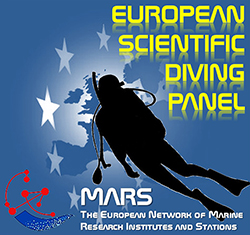Recent issues
DOI: 10.3389/fmars.2023.1134494 (PDF: open access)
Bardout Ghislain 2016. Manuel technique de plongée polaire, Ulmer, Paris, 240 pp. ISBN: 9782841388097 (link)
Benjamin Jonathan, Mackintosh Robert 2016. Regulating Scientific Diving and Underwater Archaeology: legal and historical considerations. International Journal of Nautical Archaeology 45 (1): 153-169. DOI 10.1111/1095-9270.12141
Flemming Nicholas C. and Max Michael D. (eds.) 1988. Code of practice for scientific diving: Principles for the safe practice of scientific diving in different environments. UNESCO Technical Papers in Marine Science 53, Paris, 251 pp. (link)
Heine John N. 2015. Cold Water Diving: A Guide to Ice Diving, Best Publishing company, North Palm Beach, FL, 92 pp. ISBN: 978-1930536876 (link)
Heine John N. 2017. Scientific Diving Techniques A Practical Guide for the Research Diver, Best Publishing company, North Palm Beach, FL, 232 pp. ISBN: 978-1930536-68-5 (link)
Pollock Neal W., Sellers Steven H., Godfrey Jeffrey M. (eds.) 2016. Rebreathers and Scientific Diving. Proceedings of NPS/NOAA/DAN/AAUS June 16-19, 2015 Workshop. Wrigley Marine Science Center, Catalina Island, CA, 272 pp. ISBN: 978-0-9800423-9-9 (link)
Sayer Martin D.J., Barrington Jane 2005. Trends in scientific diving: an analysis of scientific diving operation records, 1970-2004. Underwater Technology 26 (2): 51-55. DOI 10.3723/175605405783101458
